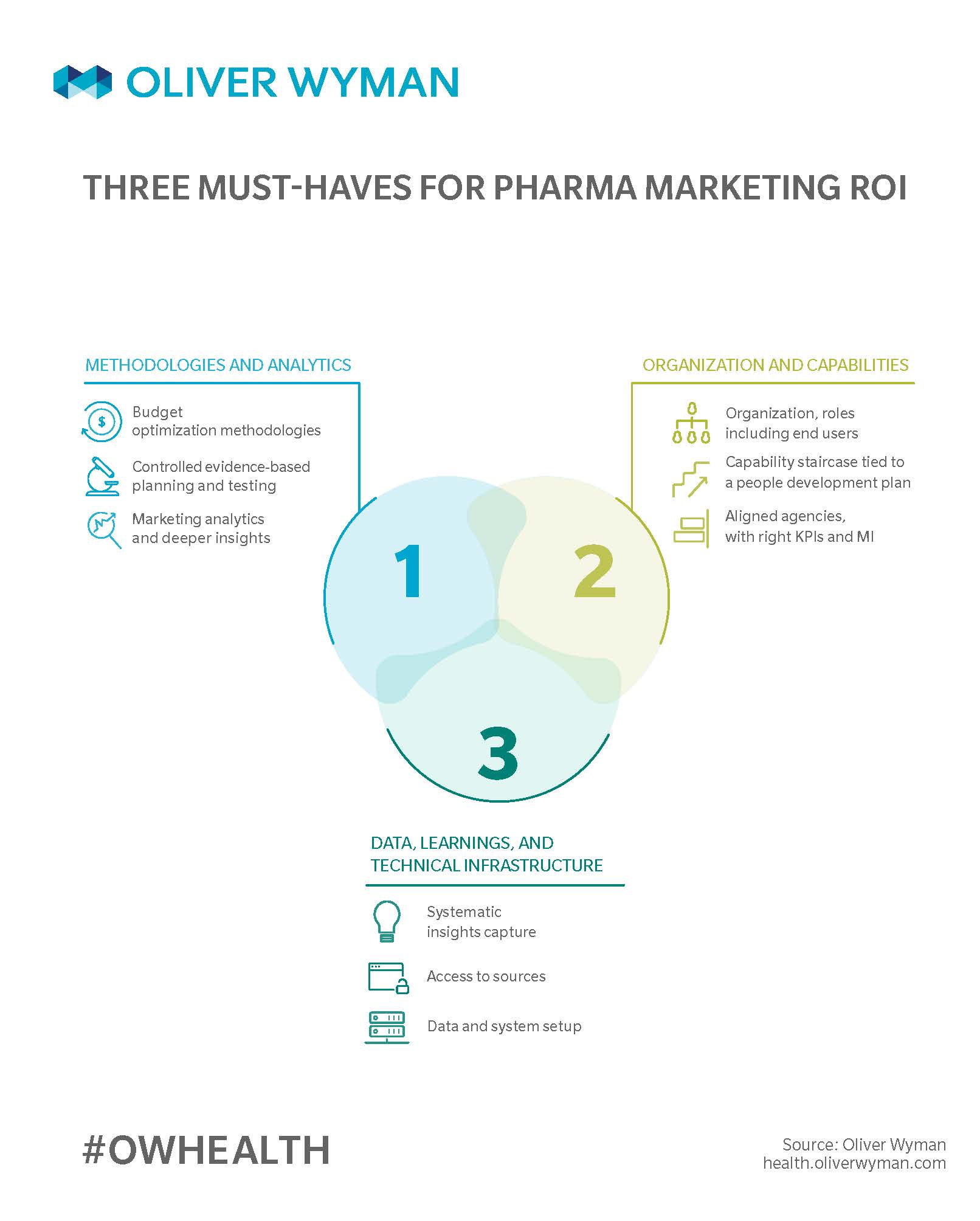Editor’s Note: This article is the first in a four-part “Pharma’s Commercial ROI Opportunity” series. In Part 1, we explore why the pharmaceutical industry is behind the curve on commercial Return on Investment (ROI), compared to more innovative sectors. Below, we outline three areas for dramatically increasing ROI from commercial activities, which we will address throughout this series.
The pharmaceutical industry is frozen in time regarding its advancement of commercial ROI strategies. Leaders are struggling to gain a clear line of sight when executing ROI optimization strategies across their many commercial spend channels. This is driven by three key underlying limiting factors that pharma executives need to tackle, or risk leaving revenue on the table.
The first factor is about the data required to make analytically informed decisions. This information often comes from disparate internal and external sources (such as multiple agencies and brand level data captured in the field) and is of inconsistent quality. It is therefore difficult for all stakeholders to believe a “single source of truth.” Furthermore, the infrastructure required to analyze and make sense of information is lacking, as is a clear understanding of the regulatory environment surrounding data.
The second factor is about the need for rigorous analytical methodologies applied to this data. A uniformly applied protocol of analytical methodologies that assess data to derive initial insights is rarely utilized. These insights then require careful stress-testing using a “test and learn” approach to further refine analytics and derive the quality outputs required to support actionable business decision-making.
The third factor is about setting up the organization to effectively utilize this analysis and decision-making to maximize commercial ROI. An ideal organizational structure has appropriately defined roles and responsibilities, with commercial teams empowered to make decisions based on these analytical outputs. A cultural shift that responds to high frequency data and moves from experience-based choices to data-driven choices results in more comfort across the board when making multiple in-year decisions.
Why is Commercial ROI a Significant Focus?
On average, pharma companies spend a quarter of their net sales on sales and marketing activities. Most of the largest pharma companies spend more on marketing than on research and development. The magnitude of this spend is significant, and balancing across brands, markets, physicians, consumers, and traditional and online channels is complex. Understanding, and being able to monitor in real, or near-real time, the return on every dollar spent across each lever is critical to maximizing each drug’s commercial potential.
When it Comes to Getting Under the Skin of Commercial ROI, Pharma’s Falling Behind
In other industries such as retail, consumer goods, and publishing where profit margins are finer, we have worked extensively with commercial teams to get a grip on their commercial ROI, driving to bottom line improvement. New tech businesses have this data-driven analysis and testing mentality woven into the very DNA in everything they do, capturing and analyzing vast quantities of data and having no fear in designing bold tests. The key is to know how to measure and embed learnings in existing systems and enhance organizational structures accordingly. With ever growing market pressures on the pharma industry internationally, there is great opportunity to bring these big data-driven principles to pharma commercial teams.
Impacting Both New and Traditional Channels
The opportunity in optimizing commercial ROI and getting closer to the consumer is not news to pharma. However, execution has proven troublesome, especially as the traditionally largest spend category – the sales field force – has been difficult to dial up or down over a short-term horizon. As new digital channels, both for the consumer and physicians, such as social media, have developed, there is a growing need to understand the effectiveness of each of these relative to traditional channels to apportion marketing spend accordingly. The opportunity isn’t limited to digital channels. With an ability to effectively assess commercial ROI, pharma has already been maximizing returns from traditional channels (amplified by big data’s potential) by segmenting healthcare professionals by their preferences, optimizing messages and learning when, where, and how to engage them. With recent leaps in computing capabilities and emerging advanced analytics skills in the workforce, barriers to undertaking these analyses are decreasing by the day.
Making Commercial ROI a Competitive Advantage
By truly understanding spend effectiveness and optimizing commercial efforts, pharma companies can take great strides toward winning against the competition. Converting commercial analytics from a back-office function to a fully integrated and effective asset within the organization could become a critical source of competitive advantage in a crowded marketplace. Focusing on commercial spend’s largest opportunities will be key to leaving others in the dust, and leaving revenue in your organization’s pockets.
Stay tuned for more articles in this series on Oliver Wyman Health, which will dive deep into the next steps pharma leaders can take to address the limiting factors of data, infrastructure, analytical methodologies, and organizational effectiveness.




